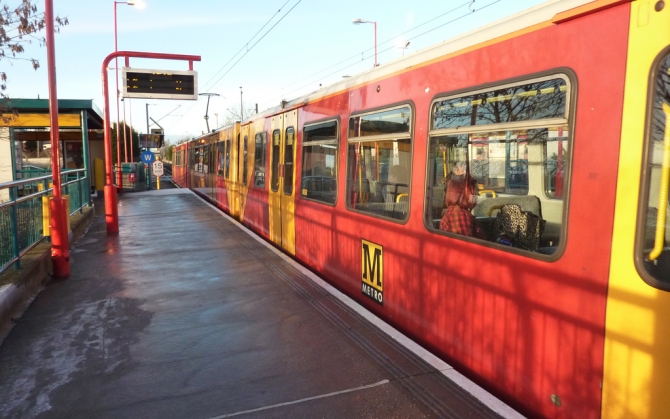Nexus — which owns and runs Tyneside’s Metro system — is preparing a £300m bid for Government cash to help it kick-start a 20-year expansion and upgrade programme. It’s expected the project will cost at least £1bn to complete.

As well as adding a number of towns and villages to the network, a key strategy of the massive extension master plan would be to link almost all of Tyneside and Wearside’s business parks with the area’s major shopping centres. If the Government cash is forthcoming, Nexus says it would also need a new fleet of high-tech trains and trams to replace its ageing rolling stock.
Originally ignored when the Metro system was first opened in 1980, accessing town centres and new stations such as Washington and Seaham would require the use of street-running trams. Pushing the 74km network into the West End of Newcastle or out to the MetroCentre, Europe’s biggest shopping complex, would also need above ground routes.
Other priority additions to the existing 60 station network would be North Tyneside’s Cobalt Business Park and Tyne Tunnel Trading Estate, Newcastle’s Silverlink shopping park, and the Team Valley Trading Estate at Gateshead. It’s likely that Nexus bosses will opt for these high-earning routes, connecting employment and retail and leisure sites, first while adding the more distant stations later.
“We’ve developed a long-term strategy for Metro which explains how it will continue to play a vital role in providing sustainable transport vital to the region’s future prosperity,” explained Nexus director general, Bernard Garner. “The key objective of this strategy is to secure a new fleet to replace the existing trains, which has been in use since 1980. It also identifies a number of new route corridors potentially suitable for Metro operation.”
He stressed that by 2021 the vast majority of system’s track, bridges and infrastructure would have been upgraded to take them well into the middle century. “The major exception to this is the train fleet, which is currently undergoing refurbishment that will extend its operating life for perhaps another ten years,” added Garner. “A fleet of new trains will deliver several important benefits including improved accessibility and performance, better environmental performance and reduced energy consumption.”
The Tyne and Wear metro is already mid-way through a £500m revamp of rolling stock, stations and facilities. “You only look to build extensions when you’ve made sure your house is in good condition,” said Tyne & Wear Integrated Transport Authority chairman, David Wood. “We are able to look at potential extensions in future because the authority has made sure Metro is in good condition through its current multi-million pound modernisation programme.”
Last year Washington MP, Sharon Hodgson, presented ministers with a petition calling for the Metro to be extended south from Sunderland which, she feels, would provide a “significant boost” to the area’s economy. “Getting a station for Washington is still a long way down the line, but this new strategy is a major step in getting all the relevant bodies on board to make it a reality,” she added.
Previous Post
Shoppers Shun Traditional Easter Gifts